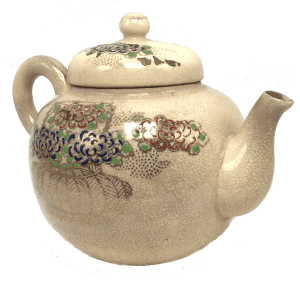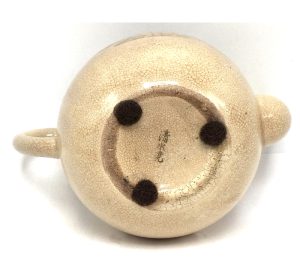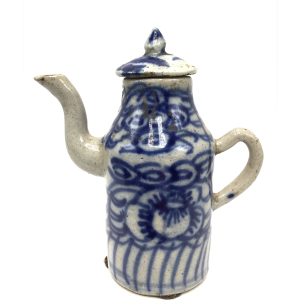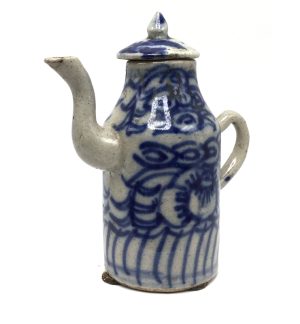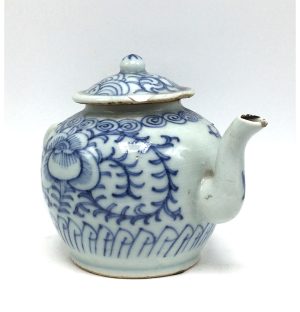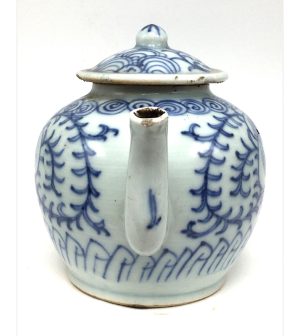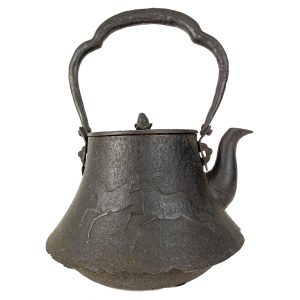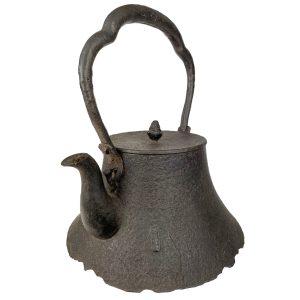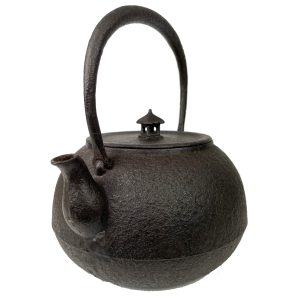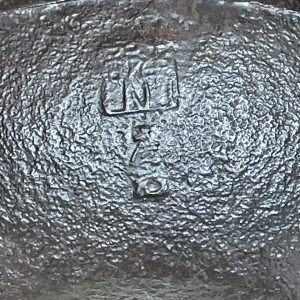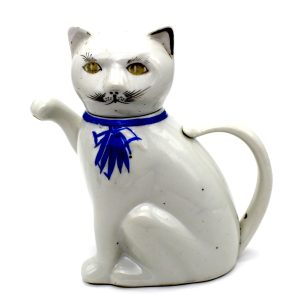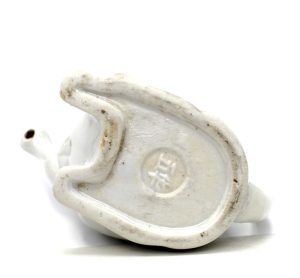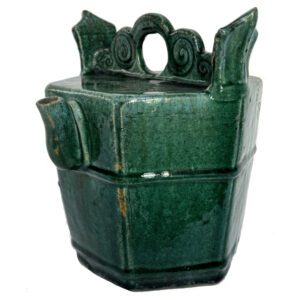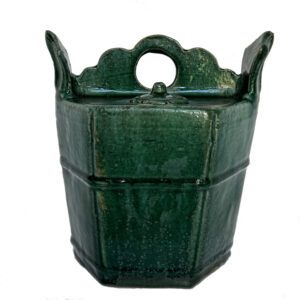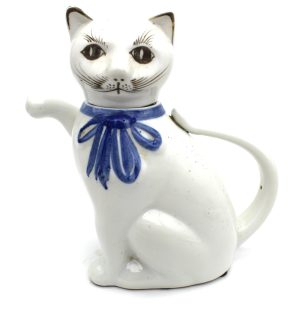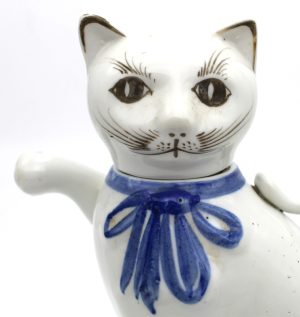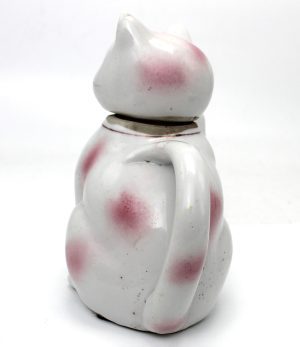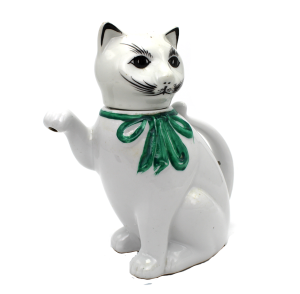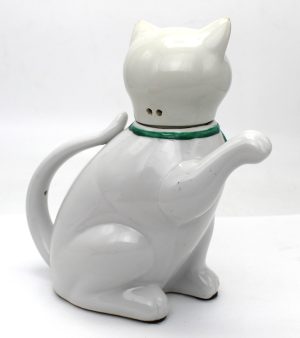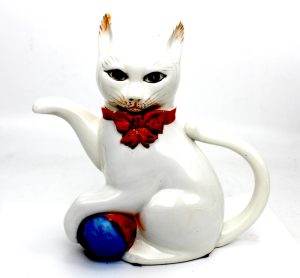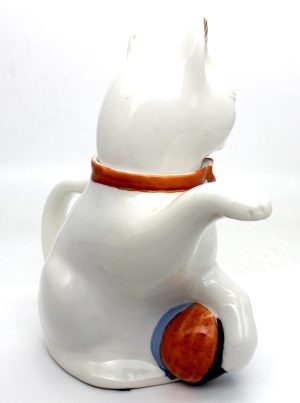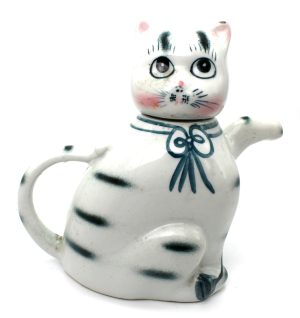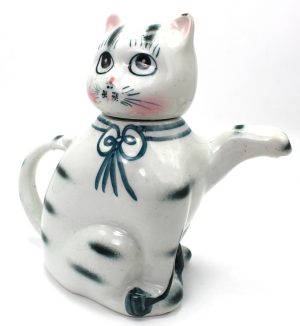Showing 1–12 of 18 results
-
Sale!


$285.00 Original price was: $285.00.$225.00Current price is: $225.00.
H: 4” W: 5.25” D: 3.5” | FREE SHIPPING WITHIN CONTINENTAL U.S.
Hand thrown and -painted Meiji single serving Kyo Ware teapot with luminescent crackled glaze and kiln seal. A chrysanthemum in a basket symbolizes longevity and rejuvenation. Kyo ware is limited, making it collected worldwide.
-
Sale!


$135.00 Original price was: $135.00.$95.00Current price is: $95.00.
H: 5.25″ W: 4.625″ D: 2.375″ | FREE SHIPPING WITHIN CONTINENTAL U.S.
Charming miniature pitcher probably used in a restaurant or home kitchen as a dispenser for soy sauce, oils or other liquids. Elegant shape, covered with chrysanthemums, plantain leaves and bindweed vines with lotus bud on top.
-
Sale!


$175.00 Original price was: $175.00.$115.00Current price is: $115.00.
H: 5.25” W: 4.75” D: 2.375” | FREE SHIPPING IN CONTINENTAL US
Small teapot with intricate cobalt blue chrysanthemum and bindweed designs widely used in late 19th century in domestic and export wares. Ball handle on lid.
-
Sale!


$695.00 Original price was: $695.00.$550.00Current price is: $550.00.
Ht: 12.5″ W: 10″ D: 9.5″ | CALL 213-568-3030 OR EMAIL [email protected] FOR SHIPPING COST
Made in the Meiji era (1868-1912),this hand crafted antique Japanese cast iron tetsubin teapot has an unusual decorative handle and curved spout and has a beautiful relief design of galloping horses. Horses have been revered creatures in Japanese culture that embody grace, power and nobility. The knob on the lid probably represents a lotus, the Buddhist symbol of purity and enlightenment. As with all antiques, these pieces are purely decorative for display purposes only.
-
Sale!


$295.00 Original price was: $295.00.$245.00Current price is: $245.00.
Ht: 9.25″ W: 8″ D: 7.25″ | CALL 213-568-3030 OR EMAIL [email protected] FOR SHIPPING COST
Meiji hand crafted cast iron Tetsubin, simple yet elegant textured surface, unique shape top temple ornamental knob. Manufacturer’s seals on side. Perfect tea lovers gift, it is recommended for display only to enhance any kitchen.
-
Sale!


$145.00 Original price was: $145.00.$125.00Current price is: $125.00.
Ht: 6.25” W: 5.5” D: 3.25” | FREE SHIPPING WITHIN CONTINENTAL U.S.
The Chinese characters within a circled seal in the mold on the bottom indicate this teapot is an antique. As the thin ribbon blue collar as wishes for long life, it is a perfect birthday gift. Recommended for decorative use only.
-
Sale!


$395.00 Original price was: $395.00.$270.00Current price is: $270.00.
H: 9″ W: 8.375″ D: 5.5″ | free shipping within continental u.s.
Apple green glazed teapot typical of Shiwan kiln pottery known for its brilliant flambé glazes in the 18-19th century. Hexagonal shape with yoked rounded handle with spiral decorations that adds a decorative touch.
-
Sale!


$145.00 Original price was: $145.00.$125.00Current price is: $125.00.
H: 7” W: 7” D: 3.5” | FREE SHIPPING IN CONTINENTAL US
Porcelain cat teapot removable head, sinuous tail handle. Beautifully hand-painted whimsical ribbon-like blue collar, dangling ornamental bow, and the black accents. Likely Qing Dynasty circa 1900-1920.
-
Sale!


$135.00 Original price was: $135.00.$115.00Current price is: $115.00.
H: 5.5″ W: 3″ D: 3.375″ | FREE SHIPPING WITHIN CONTINENTAL U.S.
Antique porcelain teapot, removable head, tail handle, and spout paw. Hand painted design with ribbon-like gold collar and dangling ornamental bow symbolizing long life. Great gift, recommended for decorative use only.
-
Sale!


$145.00 Original price was: $145.00.$125.00Current price is: $125.00.
H: 6.5″ W: 6.5″ D: 3.5″ | FREE SHIPPING WITHIN CONTINENTAL U.S.
Porcelain teapot with removable head and long sinuous tail handle ,Whimsical design with green ribbon collar and dangling ornamental bow. Bottom stamp and seal date to Qing Dynasty/Chinese Republic ca 1900-1920.
-
Sale!


$145.00 Original price was: $145.00.$125.00Current price is: $125.00.
H: 8” W: 8” D: 3.75” | FREE SHIPPING IN CONTINENTAL US.
Beautifully hand-painted whimsical cat tea pot with red collar ribbon, ornamental bow, and ball under left paw. Black, orange, red and blue accents on face, ears, head, paws and ball. Bottom double stamped seal.
-
Sale!


$145.00 Original price was: $145.00.$125.00Current price is: $125.00.
H: 7” W: 8” D: 3.625” | FREE SHIPPING WITHIN CONTINENTAL U.S.
Rotund porcelain teapot with removable head. With her pink highlights, round wide eyes, feathered brows and 3 part ribbon with bow she appears to be an affectionate female lap cat.
End of content
End of content

